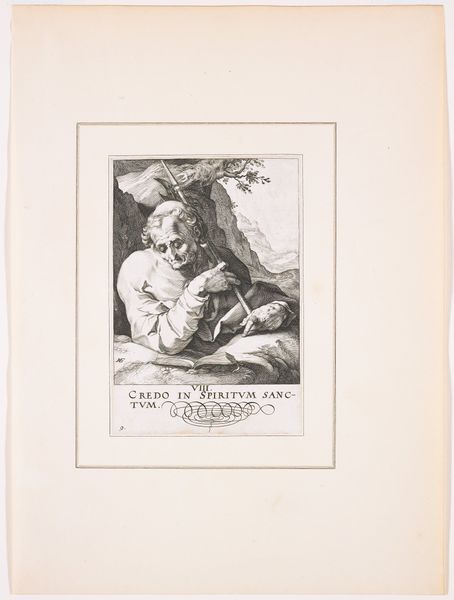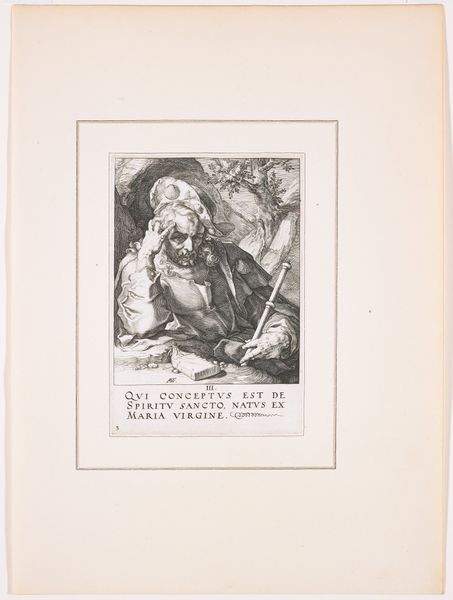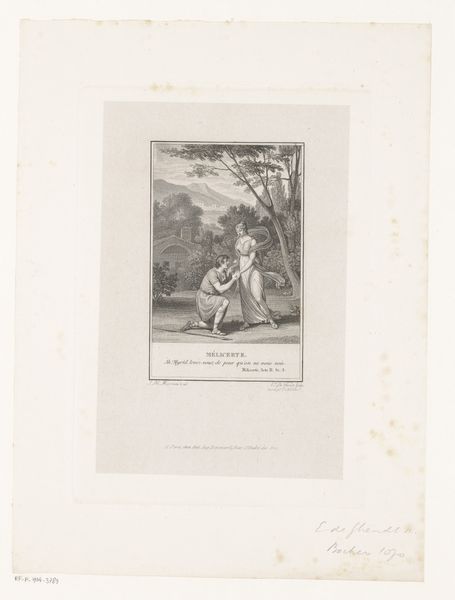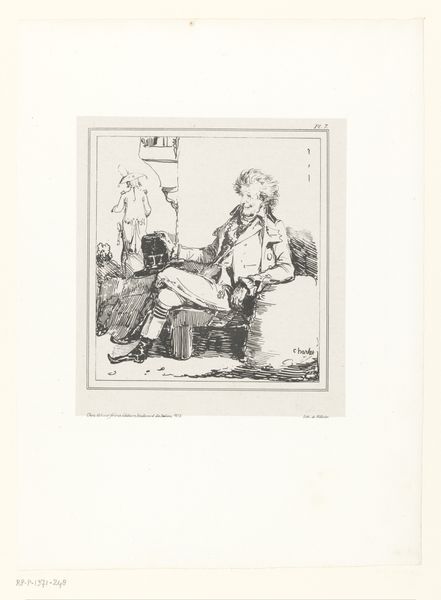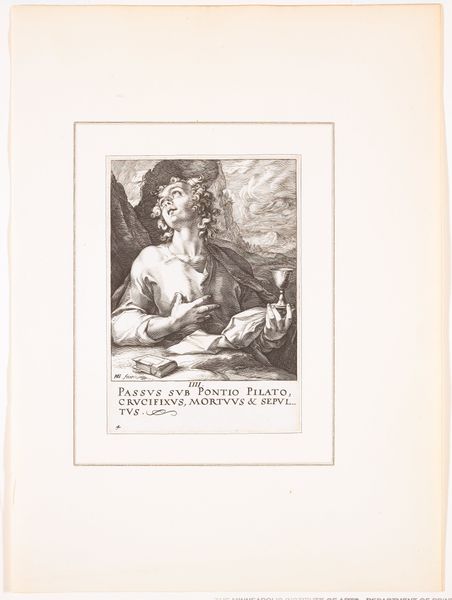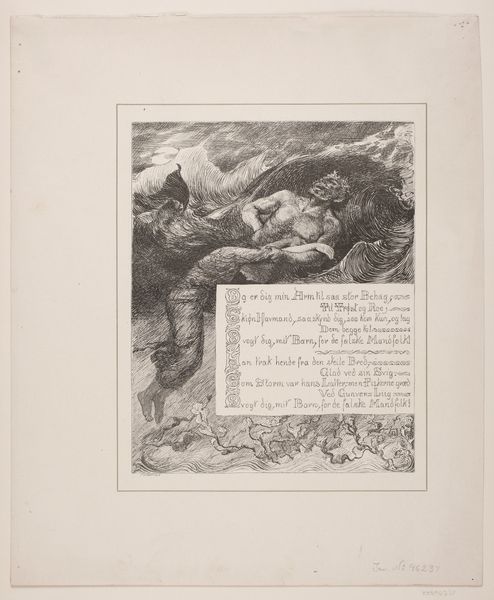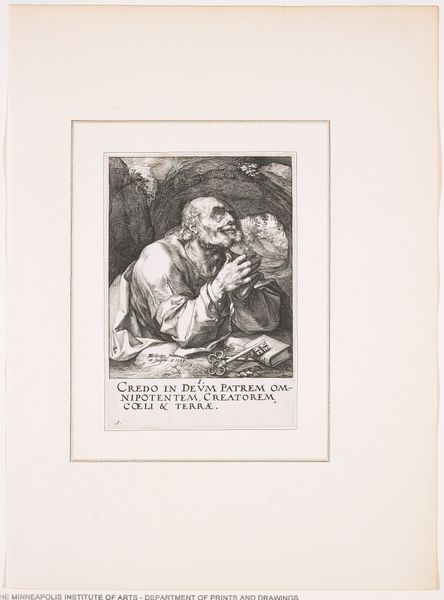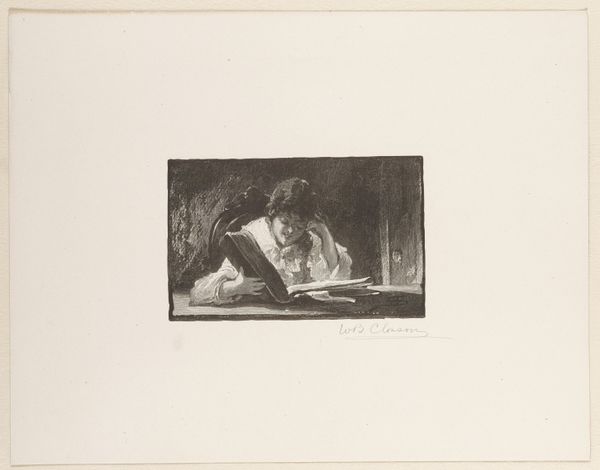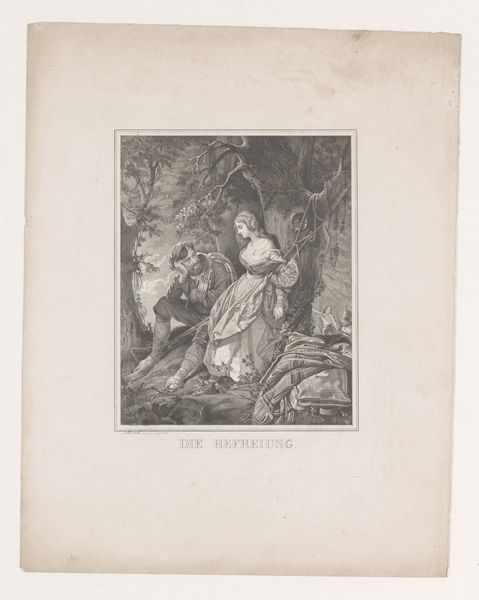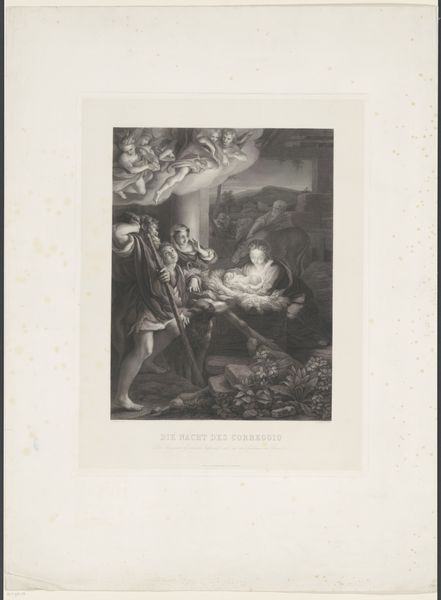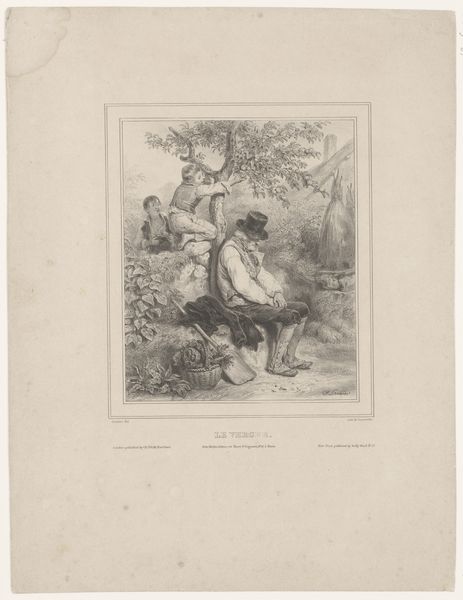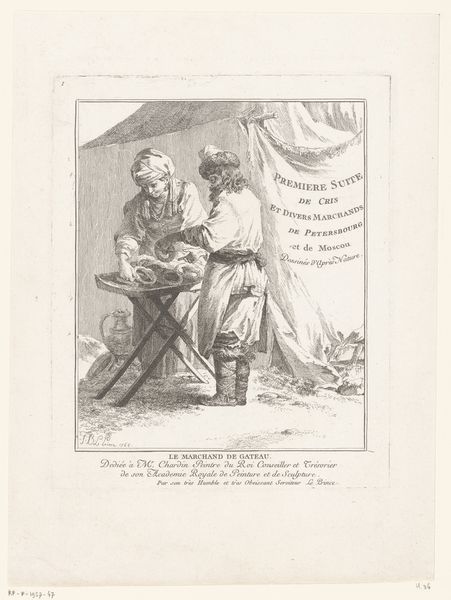
print, paper, ink, engraving
# print
#
figuration
#
paper
#
11_renaissance
#
ink
#
line
#
history-painting
#
northern-renaissance
#
engraving
Dimensions: 5 7/8 x 4 1/16 in. (14.92 x 10.32 cm) (sheet)12 1/2 x 9 1/16 in. (31.75 x 23.02 cm) (mount)
Copyright: Public Domain
Curator: Looking at this print, I get a feeling of deep introspection. The hatching creates such dramatic shadows... it's intense, isn't it? Editor: It is, strikingly so. We are currently viewing "Saint Thomas," an engraving made in 1589 by Hendrick Goltzius, now residing here at the Minneapolis Institute of Art. Curator: Saint Thomas looks preoccupied, or perhaps tormented, holed up in what seems to be a rocky cave, clutching what appears to be a spear or staff, almost as if questioning... well, questioning everything. Editor: That cave setting, almost a void, emphasizes the subject's isolation. And the staff--while resembling a spear, given his contemplative posture and book, this object may be his Apostle staff, which would hint at journeying and mission. Note the incredible line work; Goltzius truly mastered engraving! Curator: Absolutely. Those intricate lines not only shape form, but give a real texture to the whole image. It is printed with black ink on paper—and I find this monochromatic style really brings out an intellectual tone—he looks to me as though he has the weight of the world in that furrowed brow of his. Editor: The northern Renaissance loved to employ symbolism, right down to the most delicate curl in the hair! The engraving style emphasizes stark contrasts. Consider also that inscription below, in Latin. "Inde venturus est iudicare vivos et mortuos". It translates as “From thence he shall come to judge the living and the dead," which links Thomas to the future, almost as an allusion to a type of apocalyptic reckoning, lending deeper meaning to that air of torment that you sensed at the beginning. Curator: So much to take in from one little print! It really makes you ponder about doubt, belief, judgement… And maybe also a little bit about the artist Goltzius. Editor: Precisely, the work is layered with meaning; its textures lead us to ponder deeper on this fascinating historical figure and on our faith. It’s a compelling example of Northern Renaissance engraving at its finest.
Comments
minneapolisinstituteofart almost 2 years ago
⋮
The Dutch Mannerist Hendrik Goltzius was the leading printmaker of his time. A virtuoso engraver, innovative woodblock cutter, and superb draftsman, Goltzius continues to inspire awe with his wondrous technique and to convert even the most jaded art spectators to print enthusiasts. This print is from a series of fourteen engravings—"Christ, the Twelve Apostles, and Paul"—executed in 1589 when Goltzius was at the height of his powers. The series is a kind of demonstration piece displaying Goltzius's unrivaled technique and boundless imagination.
Join the conversation
Join millions of artists and users on Artera today and experience the ultimate creative platform.
